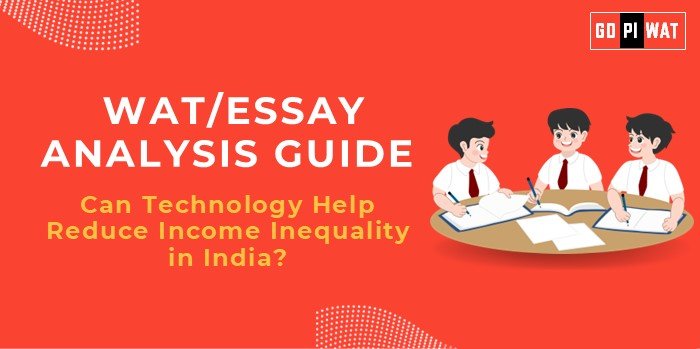📊 Can Technology Help Reduce Income Inequality in India?
🌐 Understanding the Topic’s Importance
The intersection of technology and socio-economic equity holds immense potential for addressing income inequality in India. Leveraging technology for inclusive growth aligns with the country’s development trajectory and the global sustainable development agenda.
📋 Effective Planning and Writing
- Time Allocation: Planning: 5 minutes | Writing: 20 minutes | Review: 5 minutes
- Preparation Tips:
- Identify key statistics, such as UPI usage.
- Note stakeholders, achievements, and challenges.
✍️ Introduction Techniques for Essays
- Contrast Approach: “While India’s digital payments surpass $17 trillion annually, rural households continue to lack basic internet, showcasing a dichotomy in progress.”
- Solution-Based Approach: “With 900 million internet users, India’s digital revolution offers a unique opportunity to bridge socio-economic gaps through inclusive innovation.”
📚 Structuring the Essay Body
✅ Achievements
- 📈 Digital literacy programs like PMGDISHA have enabled millions to access the digital economy.
- 💰 Financial inclusion metrics show 490 million Jan Dhan accounts created since 2014.
- 🌍 Global comparisons with Estonia’s e-governance illustrate how technology can reduce disparities.
⚠️ Challenges
- 📶 Infrastructure Gaps: Limited connectivity in rural areas slows digital adoption.
- 🔐 Cybersecurity Threats: Rising cyber fraud risks undermine trust in technology.
- 💵 Affordability: Cost barriers for devices and data services restrict access for low-income groups.
🔮 Future Outlook
- 📡 Expansion of 5G networks to bridge connectivity gaps.
- 🤖 AI-driven solutions for targeted skill development and employment opportunities.
- 📜 Policy recommendations for affordable access and robust digital infrastructure.
🎯 Concluding Effectively
- Balanced Conclusion: “Technology is a powerful tool, but its impact on income inequality will depend on bridging the rural-urban divide and ensuring affordability.”
- Future-Oriented Conclusion: “Through targeted interventions and robust infrastructure, India can transform technology into a tool for equitable growth.”
✏️ Sample Short Essays
Balanced Perspective
“India’s digital economy reflects immense potential to bridge income disparities, but this requires addressing rural access and literacy challenges.”
Solution-Oriented
“By expanding 5G and improving digital literacy, India can ensure technology serves as an equalizer rather than a divider.”
Global Comparison
“Lessons from Estonia and China show that technology can bridge economic divides, provided access and affordability are prioritized.”


